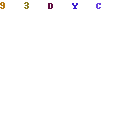
How is video and audio materials translated?
Translation of audio and video materials is one of the most demanded linguistic services today. In this case, the objects of interpretation are often feature films, commercials, technical instructions and public speeches. Customers can contact our translation agency with the above content. How exactly does the interpretation of audio and video materials from one material to another take place?
Interesting to know
The first stage of translation of this type of content involves decoding of voice speech. It should be noted that the information carrier can be preliminarily subjected to processing in a special computer program in order to improve the clarity of the sound, if technically possible. At this stage of work, the translator sequentially listens to short segments of audio and video material, interpreting the foreign speech into a text format in the original language. If the content contains dialogs, they are tabulated.
Next, work is performed to translate the text obtained during the decryption. In this case, the interpretation of words is carried out taking into account the style of the original speech, and foreign neologisms and slang expressions are adapted to the lexicon of the required language.
The third stage in the translation of audio and video files is the voice acting of the text. If the object of linguistic interpretation is a feature film or a commercial, professional actors are involved in the work, capable of fully conveying the emotions and manner of speech of the original characters. Regardless of the style of the translated content, dubbing should be done by people with good diction and timing skills.
In the case of audio content, the speech is usually recorded in a new file. The voice acting of video materials, as a rule, occurs through the imposition of voice information on the original.